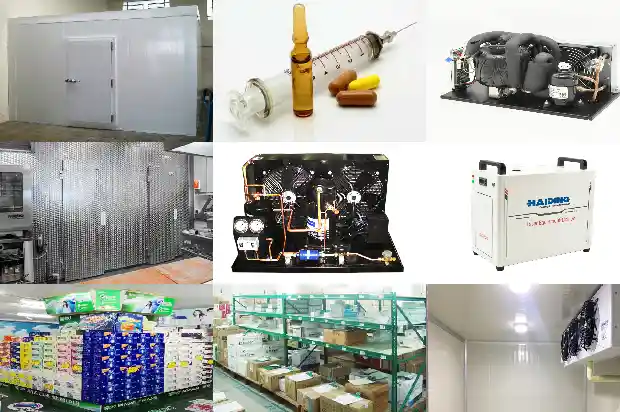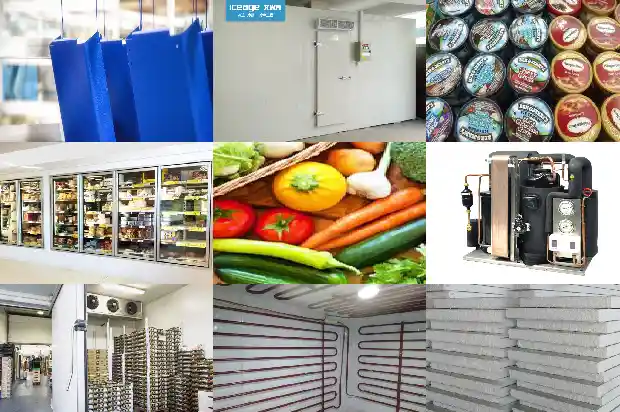What Are the Roles of Quick-Freeze Cold Storage in Food Preservation?
2024-09-16
According to the warehouse temperature of cold storage, cold storages are roughly divided into the following types: high-temperature cold storage, constant-temperature cold storage, low-temperature cold storage, ultra-low-temperature cold storage, and quick-freezing storage, also known as freezing storage. Generally, quick-freezing storage is required for poultry meat, seafood, and aquatic products. To achieve the effect of pre-cooling in advance. Quick-freezing storage refers to a method in which food must reach a specified temperature within a specified time. The average temperature is -18°C for rapid freezing.


The role of quick-freezing storage in food preservation:
(1) Avoid the formation of large ice crystals between cells.
(2) Reduce the exudation of water from cells, and there is less loss of juice during thawing.
(3) The time for concentrated solutes inside cell tissues and food tissues, colloids, and various components to contact each other is significantly shortened, and the harmfulness of concentration is reduced to the minimum.
(4) Rapidly reduce food to a temperature below the growth and activity temperature of microorganisms, effectively resisting the growth of microorganisms and their biochemical reactions.
(5) The shorter the freezing time of food in freezing equipment, the more beneficial it is to improve the utilization rate and continuous production of equipment. Most foods begin to freeze when the temperature drops to -1°C. Between -1°C and -5°C, most ice crystals are generated. This stage is called the stage of maximum ice crystal generation. Rapid freezing can greatly shorten the freezing time of this stage, quickly remove this part of heat, and improve the quality of quick-frozen food.
(1) Avoid the formation of large ice crystals between cells.
(2) Reduce the exudation of water from cells, and there is less loss of juice during thawing.
(3) The time for concentrated solutes inside cell tissues and food tissues, colloids, and various components to contact each other is significantly shortened, and the harmfulness of concentration is reduced to the minimum.
(4) Rapidly reduce food to a temperature below the growth and activity temperature of microorganisms, effectively resisting the growth of microorganisms and their biochemical reactions.
(5) The shorter the freezing time of food in freezing equipment, the more beneficial it is to improve the utilization rate and continuous production of equipment. Most foods begin to freeze when the temperature drops to -1°C. Between -1°C and -5°C, most ice crystals are generated. This stage is called the stage of maximum ice crystal generation. Rapid freezing can greatly shorten the freezing time of this stage, quickly remove this part of heat, and improve the quality of quick-frozen food.
Related Articles
- Practical Knowledge on Freeze Protection of Air - conditioning Equipment
- What Are the Differences Between Cold Storage and Freezer?
- High Power Consumption of Constant Temperature Freezer and Its Solutions
- What Are the Common Reasons for Difficulties in Cooling a Cold Storage?
- Introduction to Inspection and Handling Methods for Refrigerant Leak in Cold Storage
- How to Resolve the Scuffing Issue of Cold Storage Compressors
- What is the Correct Operation Method of the Distribution Box during Cold Storage Installation?
- Reasons for Frost Formation in Cold Storage and Defrosting Methods
- What Are the Differences Between R22 and R404A Cold Storage Systems?
- Maintenance Methods for Small Modular Cold Storage Failures
- What Vacuum Requirements Do Cold Storage Equipment Have?
- What Issues Should Be Noted in Cold Storage Installation and Construction?
- Common Malfunctions in the Operation of Cold Storage
- What Special Requirements are There for the Installation of Tea Cold Storage?
- How to Solve the Problem of Frequent Shutdown and Startup of Cold Storage Compressors?
- What are the Storage Conditions of Nectarine in Controlled Atmosphere Cold Storage?
- What Precautions Should Be Taken When Using a Fresh - keeping Cold Storage in Summer?
- Introduction to Basic Types of Cold Storage
